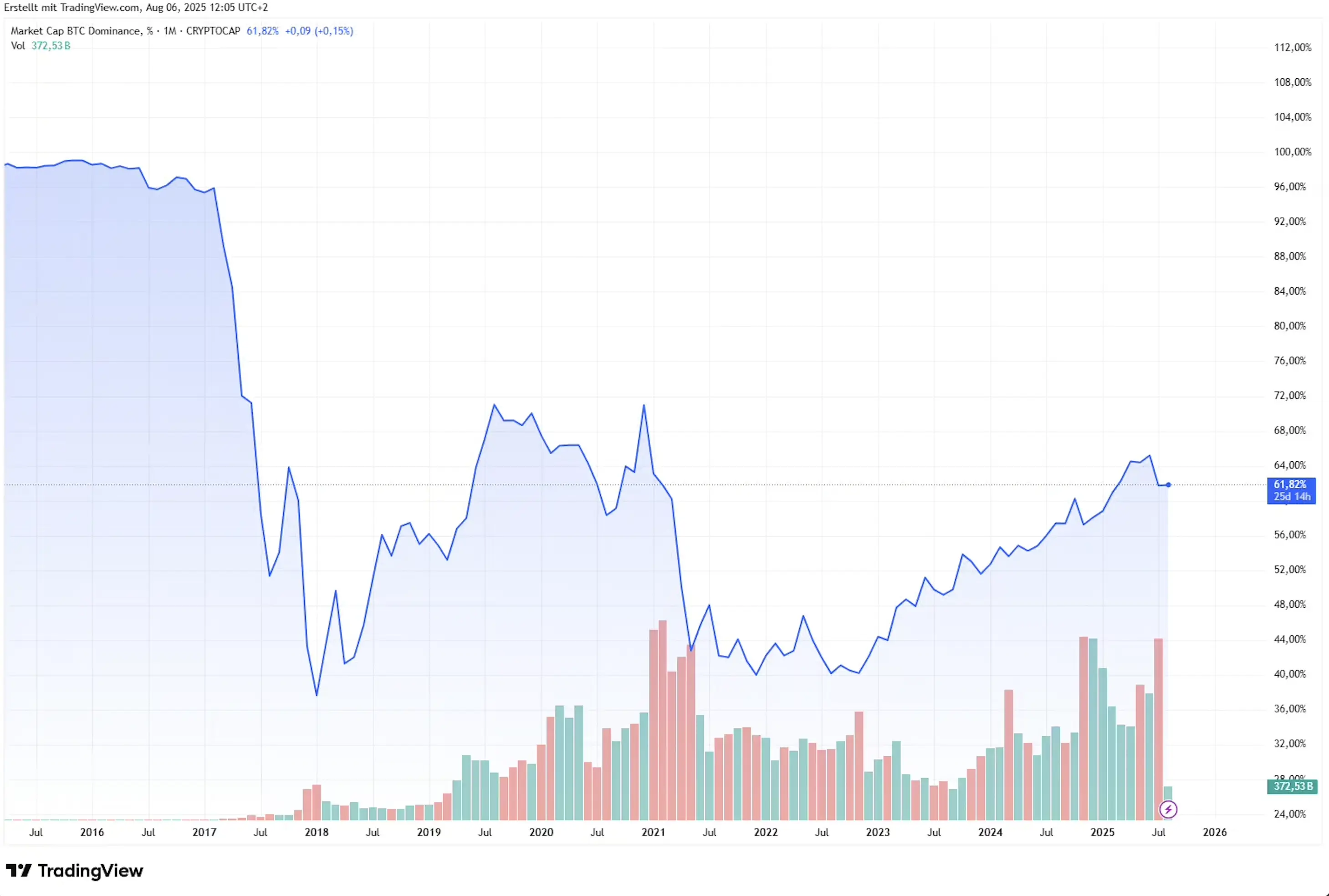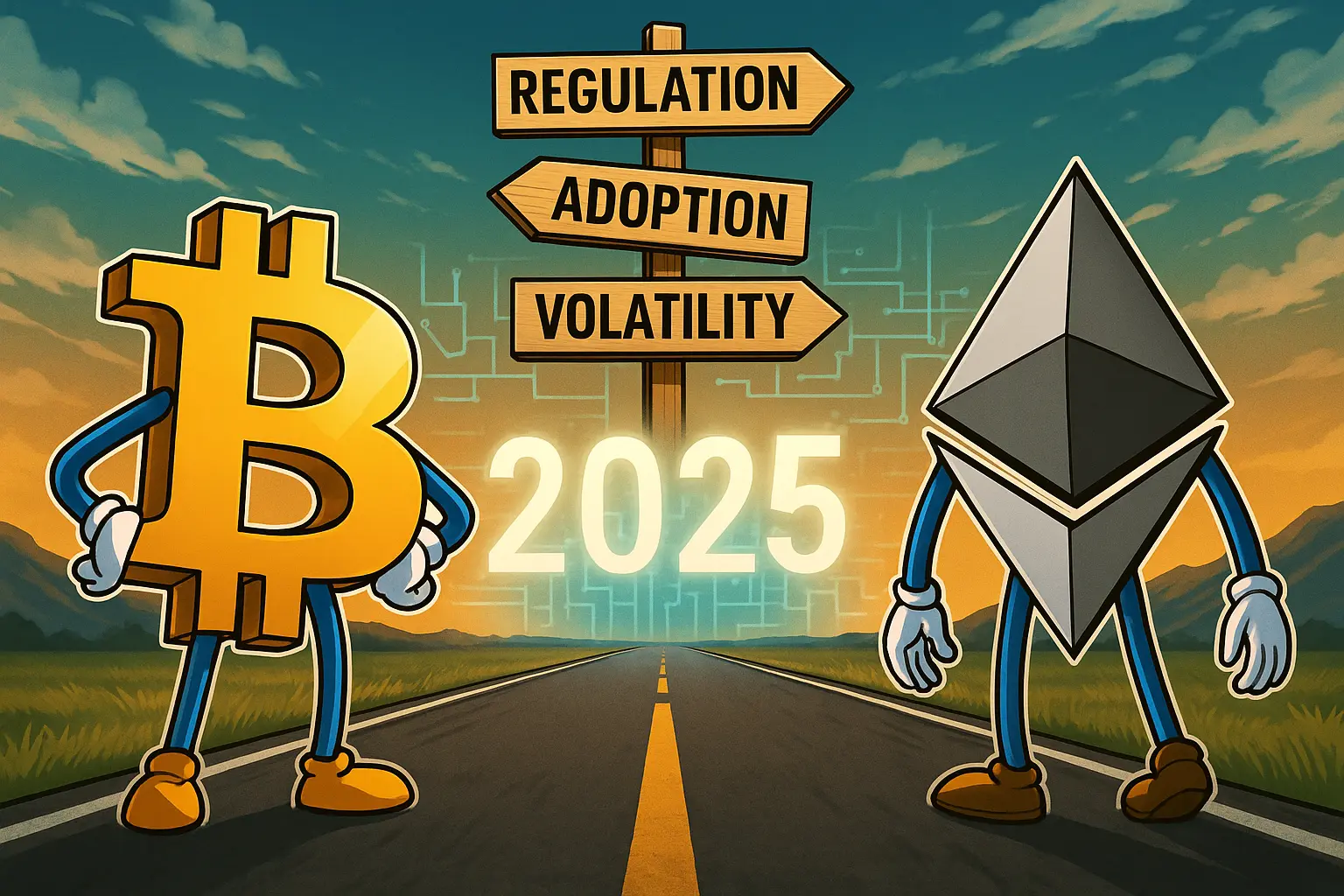The cryptocurrency market stands at a transformative juncture in 2025. As traditional four-year cycles break down and institutional forces reshape the narrative, both investors and analysts are asking what comes next. This comprehensive outlook unpacks the trends, data, and expert opinions shaping Bitcoin and the wider crypto sector through the end of the year and beyond.
The Death of the Classic Crypto Cycle?
For over a decade, the crypto market seemed locked into a predictable four-year rhythm. Bitcoin halvings would tighten supply, drive new highs, and unleash a speculative wave into altcoins. By mid-2024, however, the system began to break down. The approval of spot Bitcoin ETFs in the U.S. introduced massive institutional capital, and the market started moving ahead of schedule: Bitcoin set new records even before the most recent halving, while the traditional “altcoin season” failed to ignite with its usual force.
“The framework has fundamentally shifted,” Chen says. “Market drivers have become much more diverse. We’re now seeing a hybrid environment where global macro trends, real-time news, and regulatory signals frequently override the old speculative cycles.” The emergence of crypto-friendly policies in Washington and Europe, combined with the entrance of major asset managers like BlackRock, Fidelity, and Franklin Templeton, have drawn unprecedented levels of liquidity—and scrutiny—into the space.
Bitcoin’s New Role: From Speculation to Institutional Reserve Asset
One of the most significant trends of 2025 is the growing decoupling between Bitcoin and the altcoin universe. The “king” cryptocurrency is increasingly behaving like a macro asset class, responding to interest rate expectations, inflation, and global liquidity flows—mirroring, in some respects, gold’s historical evolution. Chen explains: “ETF inflows have transformed Bitcoin into an institutional-grade reserve. Its market cap dominance is at 62%, the highest in years, as blue-chip funds and major corporations add BTC to their treasuries.”
This institutional embrace has fundamentally changed market mechanics. Short-term volatility is still present, but directional moves are increasingly driven by regulatory events, central bank policy, and large-scale portfolio allocation shifts. In 2024 and 2025, for example, both ETF approval and global political tensions sent Bitcoin to new all-time highs even as some altcoins lagged behind.
 Bitcoin dominance climbs as institutional adoption surges TradingView
Bitcoin dominance climbs as institutional adoption surges TradingView Altcoins: Fragmented Landscape, Selective Growth
Altcoins are no longer guaranteed to follow Bitcoin’s lead. “We’re entering a more Darwinian market phase,” Chen explains. “Only projects with tangible use cases, real revenue, and regulatory clarity are attracting new capital.” While Ethereum, Solana, and a handful of Layer-1s remain on the radar of institutional buyers, speculative meme coins and weak DeFi tokens face declining interest. Some analysts call this “altcoin compression,” a period where market share consolidates around high-utility assets and niche verticals.
Importantly, regulatory risk is now a primary differentiator. SEC actions, MiCA implementation in the EU, and spot ETF applications for Ethereum and Solana are filtering out low-quality projects. “We expect the SEC to approve spot ETFs for leading altcoins soon, further legitimizing these assets for traditional investors,” notes Chen. The impact of these products could be significant, not only for price discovery but for the broader acceptance of digital assets in traditional finance.
Macro, Regulation, and the New Crypto Narrative
The old market rhythm—halving, hype, crash, recovery—is yielding to more complex forces. Macroeconomic uncertainty, such as U.S.-China trade tensions and the dollar’s trajectory, play an outsized role. Regulatory clarity (or the lack thereof) can trigger rapid price movements. The new narrative is not just about scarcity or technological innovation, but also about capital flows, geopolitical strategy, and legal frameworks.
As Gracy Chen highlights, “Regulation is no longer an existential threat, but a growth engine. Clearer rules are fueling institutional capital inflows, which, in turn, finance new infrastructure and drive real-world adoption. In many ways, crypto is becoming an integrated part of global finance.”
Where Is Bitcoin Heading in 2025?
Chen’s forecast for Bitcoin is both ambitious and grounded. She sees BTC ending the year in the $110,000–$125,000 range, calling this a “measured expectation” compared to some market bulls. Bitwise Asset Management puts their year-end target as high as $200,000, while research firms like CryptoQuant and analysts such as Arthur Hayes do not rule out a run toward $250,000, with the caveat that volatility—including corrections back toward $100,000—should be expected.
What could drive Bitcoin higher? Beyond ETF demand, the prospect of interest rate cuts by the Federal Reserve, ongoing geopolitical instability, and continued adoption of crypto in institutional portfolios are all powerful catalysts. On the other hand, regulatory crackdowns, negative macro shocks, or abrupt shifts in risk appetite could trigger pullbacks.
- Bitget CEO’s conservative Bitcoin target: $110K–$125K
- Bitwise and CryptoQuant suggest possible $200K–$250K
- Arthur Hayes: $250K potential, but $100K retest also possible
Various legislative initiatives in the US, such as the GENIUS Act, also clearly demonstrate how political decisions shape the market.
Altcoins: Waiting for Their Turn
Despite Bitcoin’s dominance, several altcoins are quietly building momentum. Ethereum’s expected ETF approval, Solana’s increasing use in institutional portfolios, and the tokenization of real-world assets via platforms like Polygon are all drawing renewed interest. “We’re likely entering a period where select altcoins break from the pack, but the broad ‘alt season’ euphoria of past cycles is less likely,” says Chen.
The landscape is increasingly selective—verticals like AI, RWAs (real-world assets), and enterprise blockchain are drawing new capital, while older, purely speculative plays are fading. Regulatory clarity is making it easier for institutions to participate, but is also weeding out risky projects. Tokenization and smart contracts could be the next major drivers of demand, especially as large companies and governments move to put real assets on-chain.
Integration: Crypto Joins Traditional Finance
The big story for 2025 is integration. Digital assets are no longer a sideshow—they’re being woven into mainstream portfolios and financial products. The likely approval of more spot ETFs, new frameworks for crypto custody and reporting, and broader participation by pension funds, endowments, and asset managers are all on the horizon. This isn’t just a price story—it’s about a fundamental reshaping of how global finance allocates risk and value.
Gracy Chen sums it up: “By late 2025, we could be entering a truly unique phase where digital assets are inseparable from the wider financial system. The lines between crypto and traditional markets will blur, driving innovation and opening new opportunities worldwide. At the same time, we’ll see increasing differentiation among projects—only those with real utility, security, and regulatory clarity will thrive.”
Conclusion: A Market at the Crossroads
The next 18 months will test the maturity of the crypto sector. Bitcoin’s institutional era is well underway, but the future of altcoins and DeFi hinges on innovation, utility, and compliance. Regulatory clarity, macroeconomic policy, and mainstream adoption will drive both risks and opportunities. If the industry can navigate these challenges, the crypto market in 2025 may look dramatically different—more robust, more integrated, and more indispensable to global finance than ever before
Crypto Market 2025: Key Questions & Expert Answers
Is the classic four-year crypto cycle dead?
The traditional halving-driven cycle is losing its predictive power. With the rise of institutional adoption, spot Bitcoin ETFs, and macroeconomic drivers, market behavior now hinges more on global capital flows and regulatory developments than on supply halving alone. Analysts point to the outperformance of Bitcoin prior to the 2024 halving and the muted altcoin “season” as evidence of this structural change.
How has institutional adoption changed Bitcoin’s role?
Bitcoin is increasingly viewed as a macro reserve asset, decoupling from speculative trends and responding to ETF flows, interest rate changes, and corporate treasury moves. Its dominance is rising, with over 62% market share, and blue-chip asset managers are driving new levels of liquidity and legitimacy.
What is the main risk for altcoins in 2025?
Selectivity is the key trend: only projects with robust use cases, proven adoption, and regulatory clarity are thriving. Meme coins and speculative tokens face shrinking market share. Regulatory actions—especially in the U.S. and EU—pose both risks and opportunities, as only compliant assets will attract institutional inflows and mainstream acceptance.
How important is regulation for the market’s future?
Regulatory clarity is now a core driver of price and adoption. Secure frameworks for spot ETFs, custody, and compliance are enabling pension funds, endowments, and corporates to participate at scale. Inconsistent or ambiguous rules remain a source of volatility, but the overall trend favors deeper integration with traditional finance.
What is a realistic price target for Bitcoin in 2025?
Gracy Chen forecasts Bitcoin at $110,000–$125,000 by year-end, while other analysts see upside to $200,000 or even $250,000 in case of continued ETF demand and global macro tailwinds. Downside volatility is possible, but most experts agree that institutional adoption and regulation are creating a more resilient price floor.
Will altcoins regain momentum, or is Bitcoin dominance here to stay?
While Bitcoin’s dominance may persist in the near term, selective altcoins like Ethereum and Solana are poised for renewed interest—especially as ETFs and tokenization trends accelerate. The broad-based “alt season” of past cycles is less likely, but focused institutional demand for high-utility assets could shift the landscape in 2025–2026.
What are the most important macro and market risks to watch?
Key risks include global economic slowdown, rising interest rates, regulatory uncertainty (especially around securities law and ETF approvals), and potential geopolitical shocks. Conversely, a Fed policy pivot, further integration of crypto into financial systems, and legal clarity could serve as strong tailwinds.




